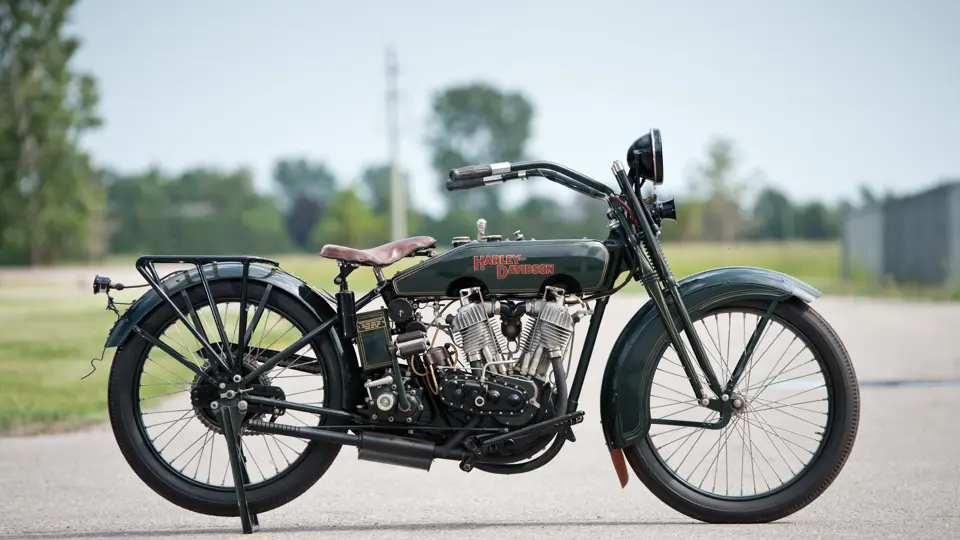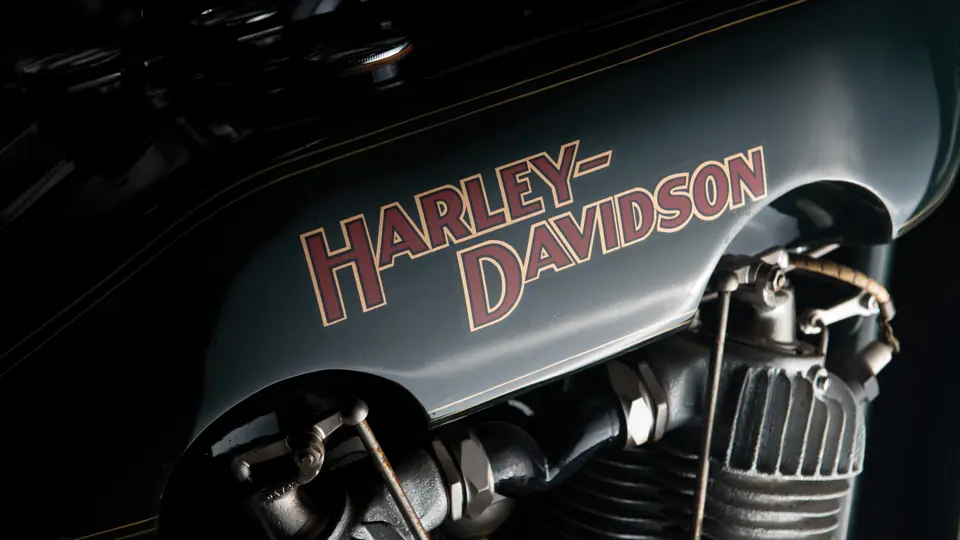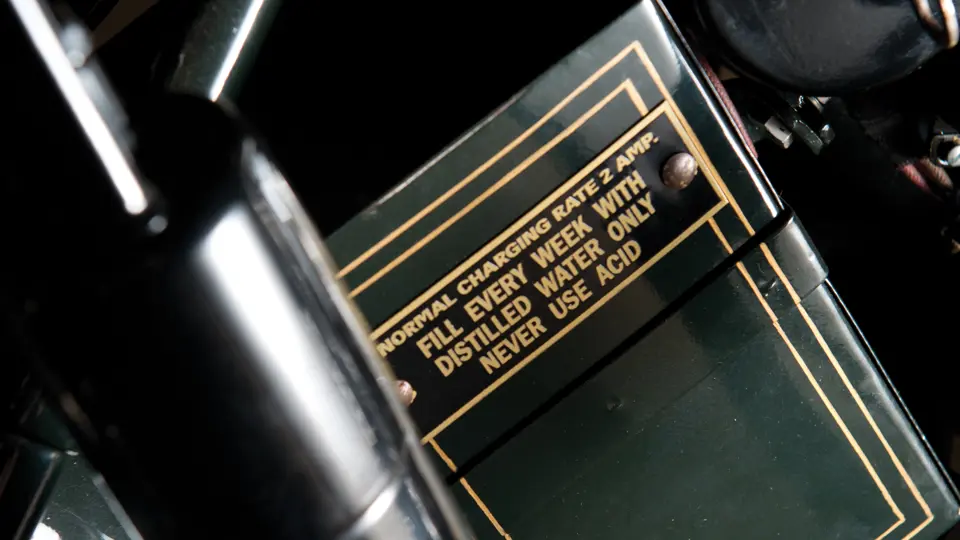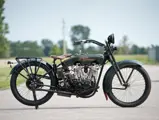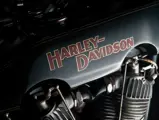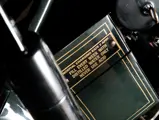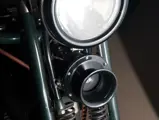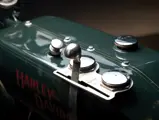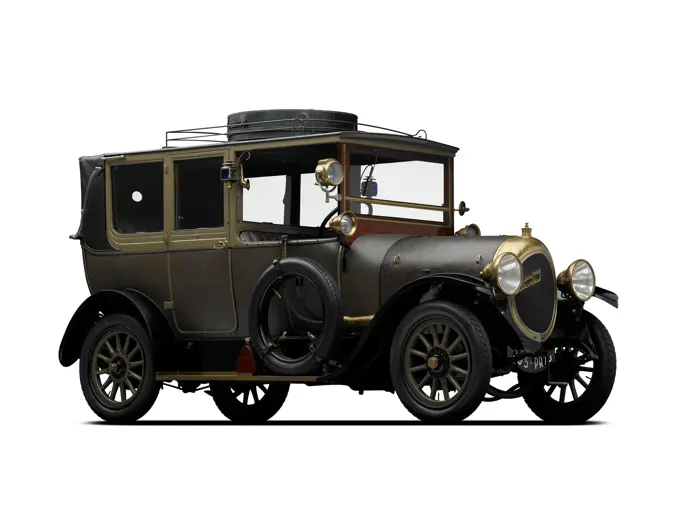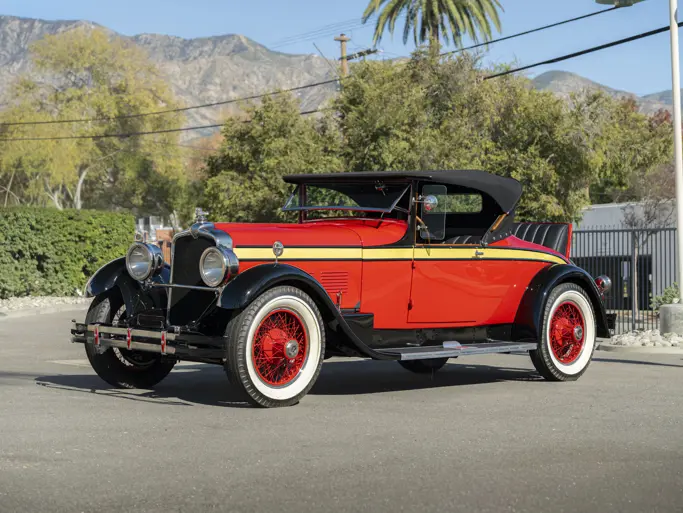74 cu. in. inlet-over-exhaust V-twin engine with Schebler carburetor, three-speed hand-shift transmission, single bucket saddle, sprung front fork suspension, hard-tail rear suspension, luggage rack, kickstand, and foot-operated rear drum brake. Wheelbase: 59.5 in.
Harley-Davidson’s first V-twin was introduced in 1909, but it really hit its stride in 1911 with the addition of a mechanical inlet valve, the so-called overhead “pocket valve.” In 61-cubic inch form, it would remain in production for 20 years. By 1914, the V-twin had gained chain final drive, a proper clutch, and a three-speed transmission. A kick-start, or “step-starter,” followed soon after.
When the 74-cubic inch J model was introduced in 1922, the 22 JD featured full electrical equipment, while the FD model was fitted with a magneto. It was capable of an impressive 40–60 miles per gallon. The big twin was built in response to the four-cylinder Henderson, which was smoother but not as reliable. It had sprung front forks and a hard-tail rear end, which prolonged chain life.
The JD’s lighting and ignition consisted of a six-volt generator/ignition unit storage battery, headlight, taillight, and motor driven oil pressure light. The ignition system involved a circuit breaker, distributor, and high-tension coil, and it was located behind the engine, away from rain.
This bike was sold new in Windsor, Ontario, and was restored by Early Times Motorcycles, of Blenheim, Ontario, from a sound, low-mileage original for its owner of 40 years, local farmer Daniel Trott. Finished in its original olive drab, with spectacular and correct pinstriping on its double fuel tanks and oil tank, the bike was rebuilt literally bolt by bolt. The saddle, optional front and rear lights, and rubber footboards are original, and the bike has a rear luggage rack and stand. The engine has no damaged fins, and the crankcase and two-into-one exhaust have been correctly refinished. The bars are new, with concealed cables, and a new wiring harness has been installed.
The bike has new nickel plating throughout; the rims are painted, with stainless steel spokes, and both chains are new, as is the rear brake and the Coker tires and tubes. The electric horn was missing and proved to be the hardest single item to locate, with a replacement finally found at a whopping reported cost of $3,500. The sides of the fenders were dented, and as a result, they were precisely reconstructed.
For a 91-year-old motorcycle, the Harley-Davidson JD is still a lively performer, and it can easily reach 70 mph once it is broken in. However, Prudence is likely to be sitting behind the new owner, whispering in their ear that they have only a rear brake. This superb Harley-Davidson presents its next owner with the opportunity to enjoy a “new” 1922 motorcycle, both to ride and show, if he or she so desires. It’s bound to be a head-turner wherever it goes.





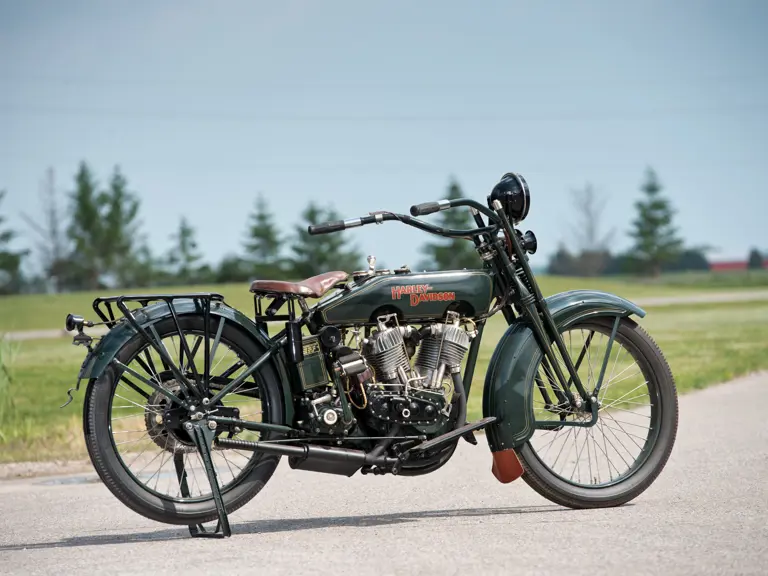
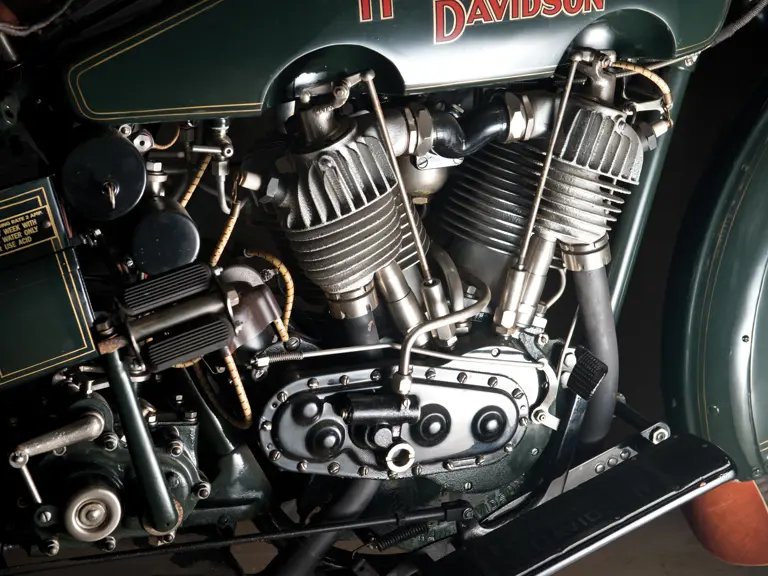
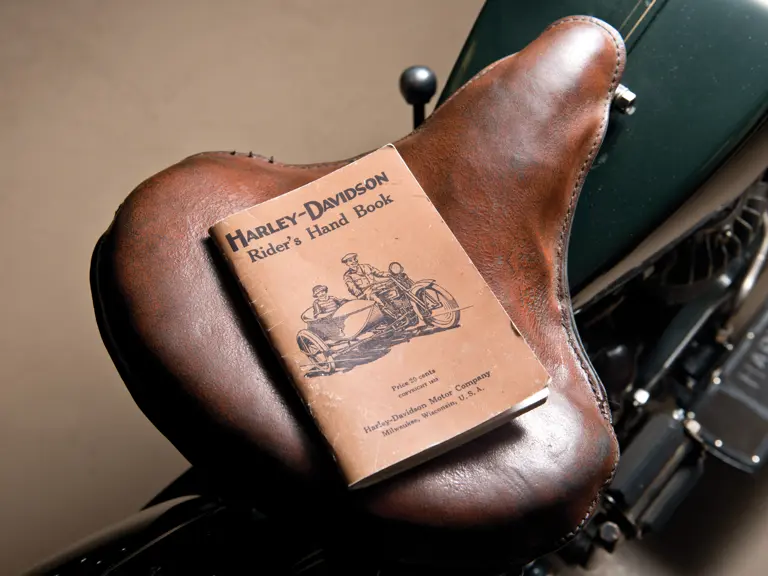
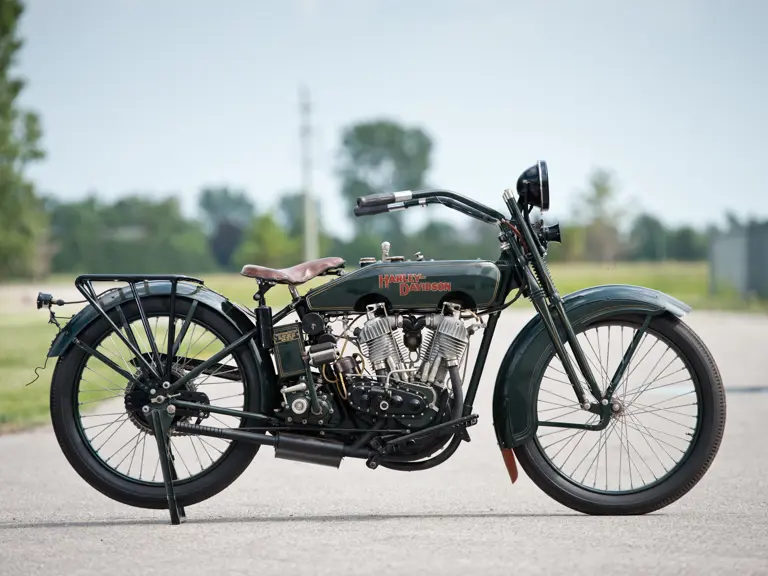
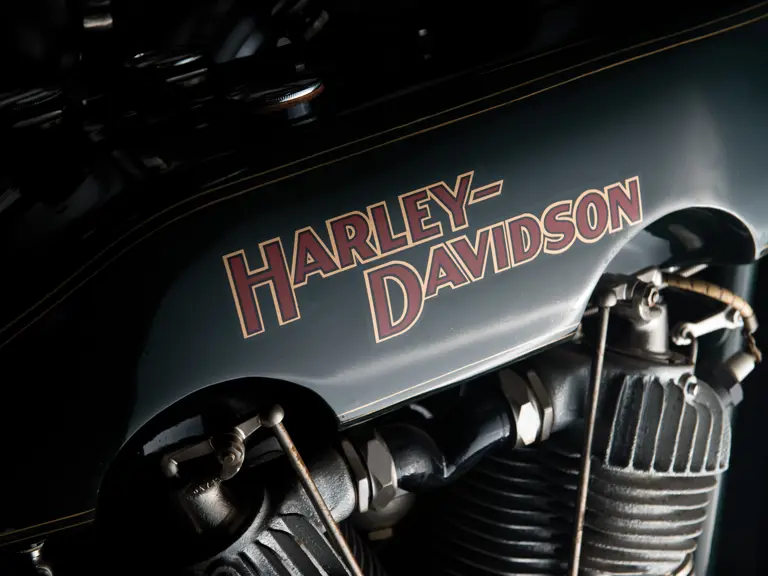
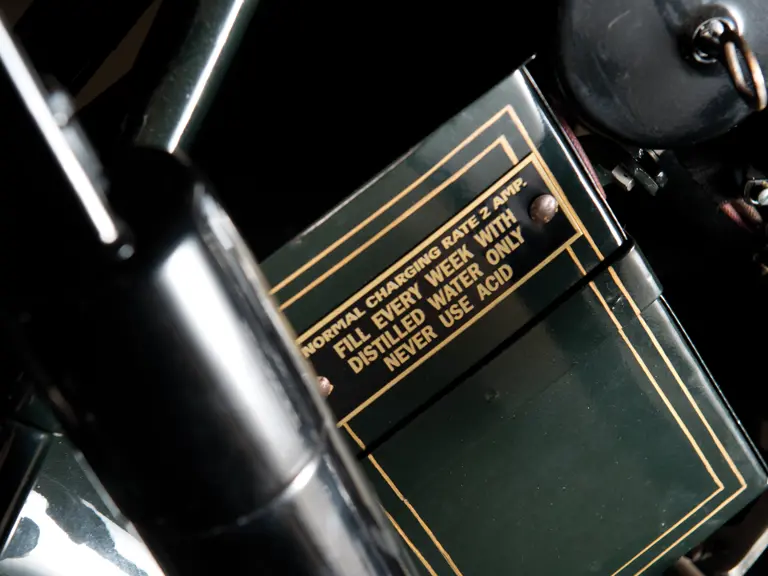
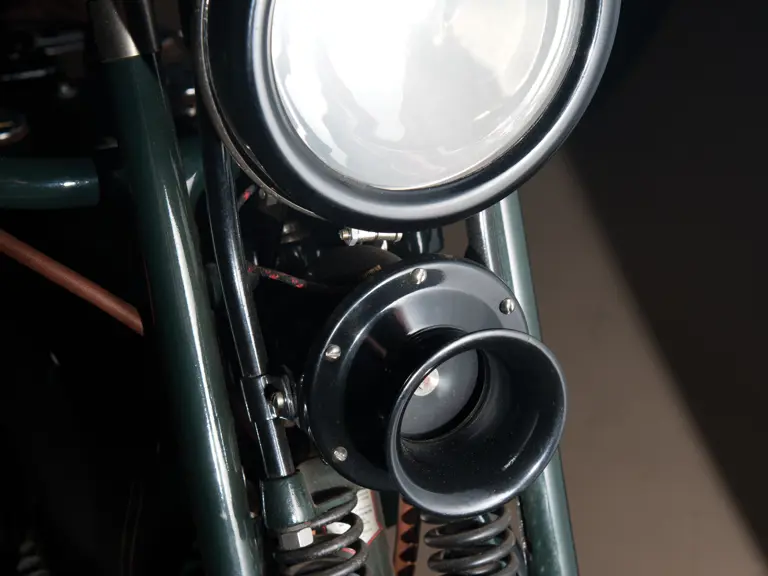

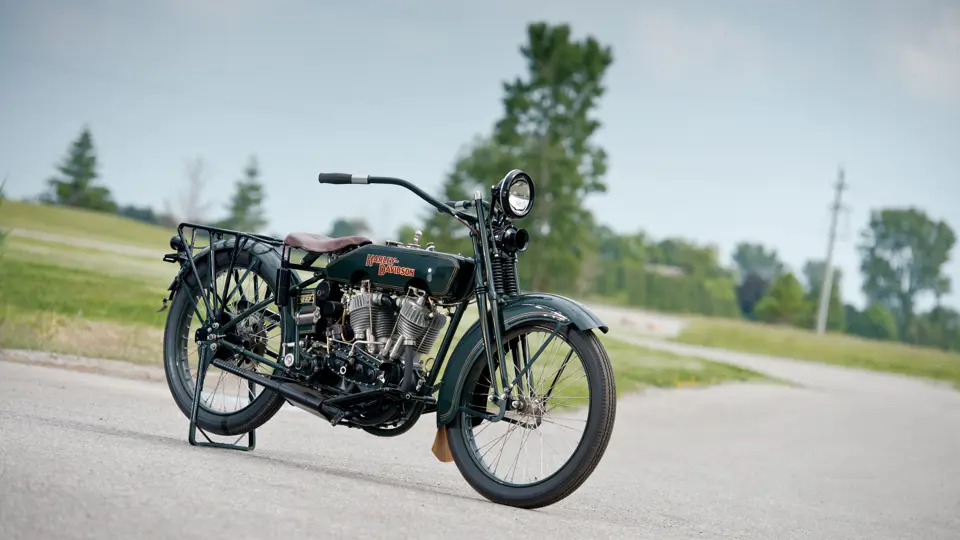
 | Plymouth, Michigan
| Plymouth, Michigan
